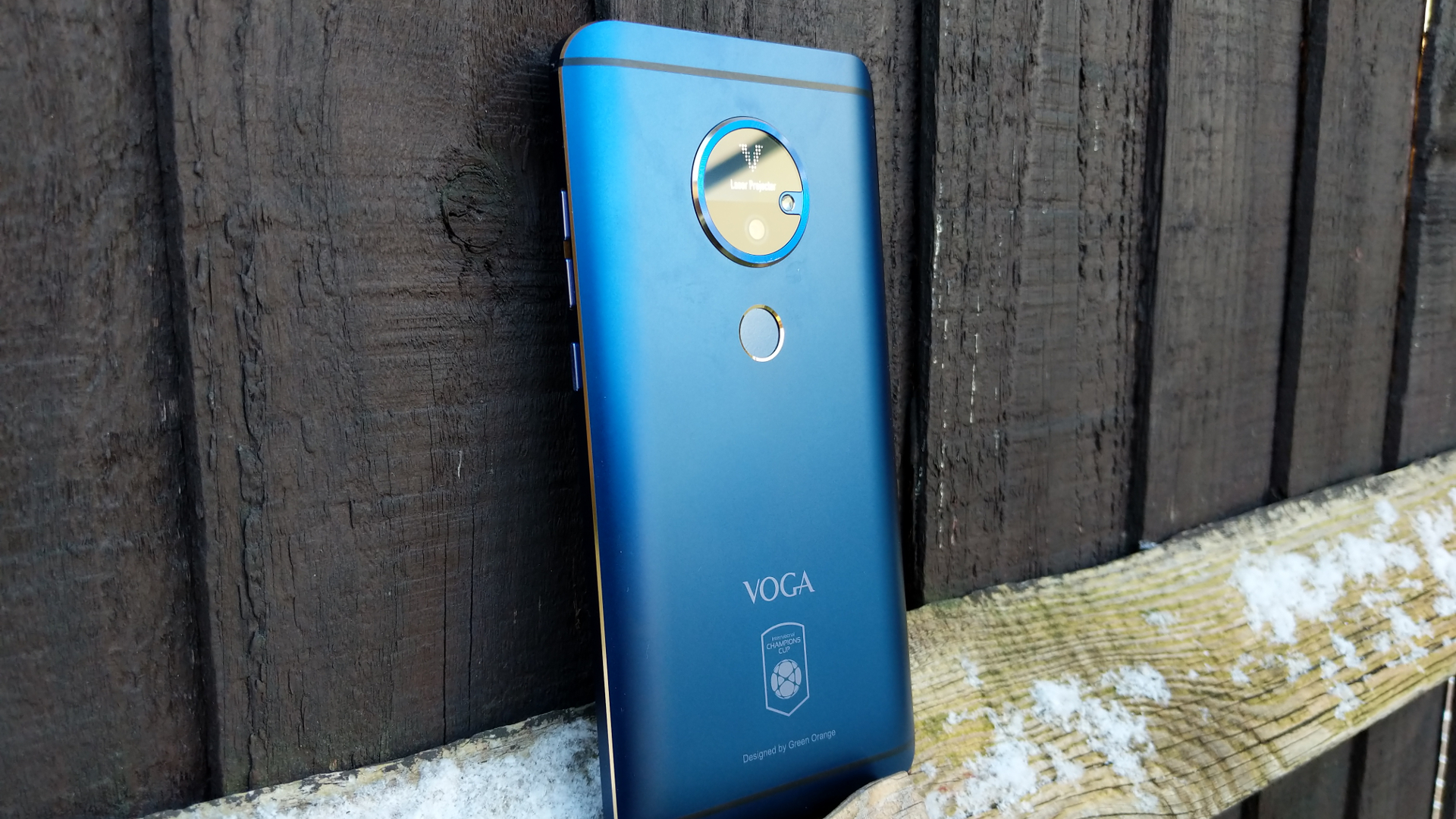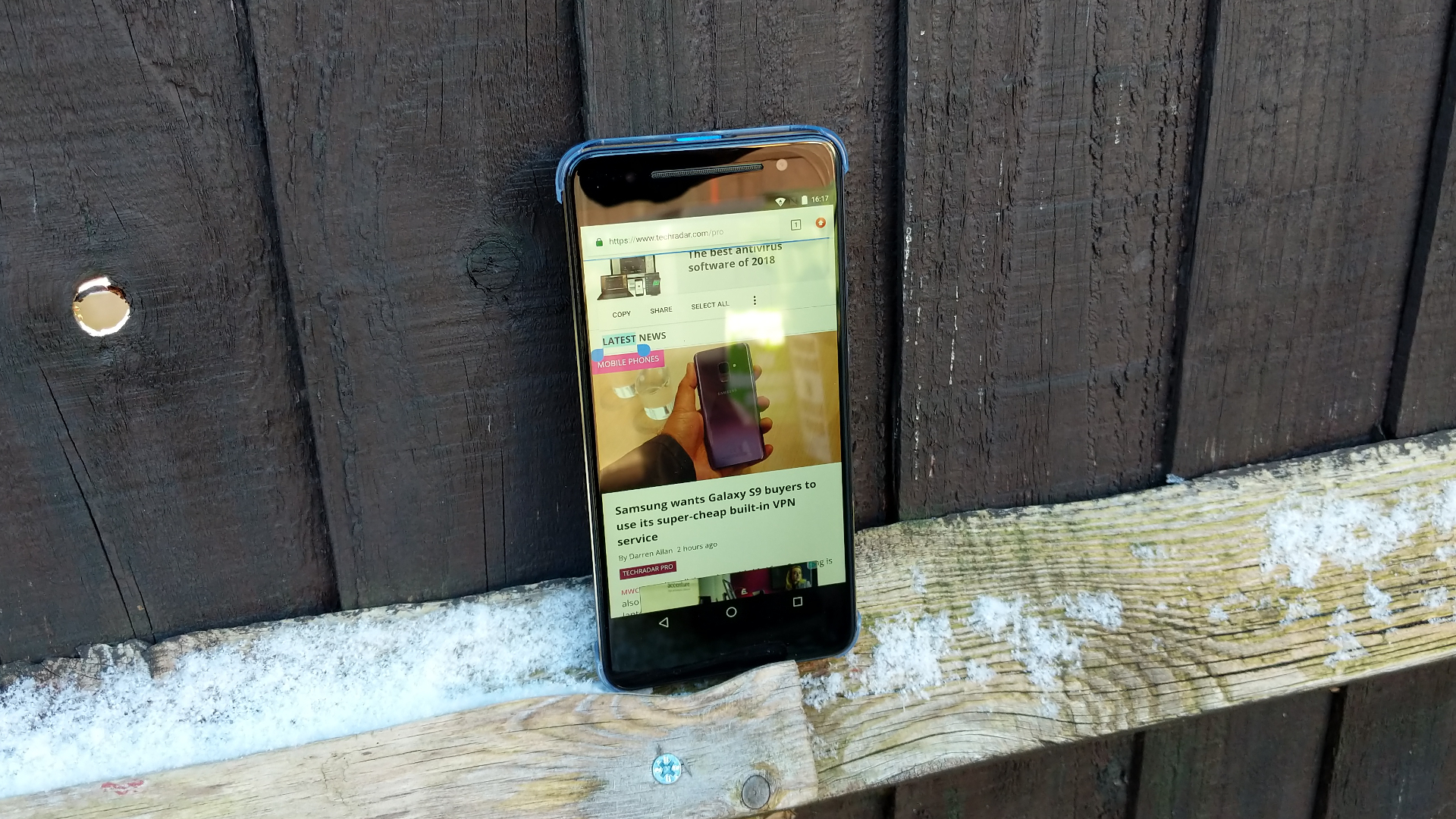Early Verdict
This is an impressive device with a surprisingly good projector, but we found one major stumbling block with the Voga V, and you should hold off any purchase until Ragentek solves the issue.
Pros
- +
Very tempting price
- +
Great design
- +
Projector performance is better than expected
- +
Battery life is surprisingly good
Cons
- -
Google Web Services doesn’t work
- -
No easy way to connect an external source
Why you can trust TechRadar
Once upon a time, Samsung unveiled a phone with a unique characteristic: it had a built-in projector. Back in 2012, the Samsung Galaxy Beam thrilled us with this innovative feature. That said, both the Beam and its follow-up, the Beam 2, proved to be commercial failures as Samsung canned the idea.
Online Chinese retailer, Gearbest, sent us the sample device for this hands-on and sells the Voga V for just over £249 ($350) at the time of writing. Note that, while this price includes delivery, it is exclusive of any taxes that may be levied by HMRC or the courier companies on behalf of the vendor. Want to buy tech from online Chinese retailers? Read this first.
Fast forward to 2018 and in the increasingly competitive world of smartphone manufacturers, a little known Chinese vendor, Ragentek, has decided to resurrect the idea in the form of the Voga V – with the scanning engine for the projector display, the PicoP, coming from MicroVision.
Design
The first thing you notice about the Voga V is how thick and heavy it is. That’s not a surprise given that it houses a projector, and at 10.2mm with a weight of 204g, it is still smaller than most portable models – its footprint (153 x 76mm) is average for a device with a 5.5-inch display.

That said, the Voga V never felt uncomfortable to use, as its full metal body is designed in such a way to make holding it feel, well, natural – and it looks premium rather than plastic, with a metallic blue finish and bevelled edges, plus a 2.5D in-cell display.
The projector is located at the top of the device, with a microUSB port, headphone socket and the speaker located at the bottom. On either side, there are two volume buttons and the on switch, and a SIM tray that can house two SIM cards plus one microSD card (though not simultaneously).

Flip the phone over to uncover the rear camera sensor (and flash), a fingerprint reader plus the Voga logo. There’s also a reference to the International Champions Cup, a friendly pre-season soccer tournament that has both Manchester football clubs and FC Barcelona as participating teams, and is sponsored by Ragentek.
CPU: Mediatek MT6750V octa-core
GPU: Mali-T860 MP2
RAM: 4GB
Storage: 64GB
Screen size: 5.5-inch
Resolution: 1920 x 1080
Weight: 204g
Dimensions: 153 x 76 x 10.2mm
Rear camera: 12MP
Front camera: 8MP
OS: Android 7.0
Battery: 4Ah
Specifications
The Voga V uses a MEMS laser projector (there’s no DLP technology here) capable of delivering a 5000:1 contrast ratio (or so it claims on the spec sheet), and comes with a customized UI that runs on top of Android 7.0.
Sign up to the TechRadar Pro newsletter to get all the top news, opinion, features and guidance your business needs to succeed!
The hardware used by the smartphone is what you’d expect to find on a top-end 2016/2017 flagship model. The combination of an octa-core chip, 4GB of RAM and 64GB of storage should be powerful enough to keep this handset relevant for some time going forward.
A couple of notes on the components. One downside is that there’s no 802.11ac Wi-Fi, which is a disappointment for a device of this price level – adding this would have cost pennies. Its absence means that the phone may struggle when streaming high resolution content. Ragentek claims that the 4,000mAh battery can power the projector for at least four hours, something we’re highly dubious of.
In use
Sadly we couldn’t get the Voga V to sign into Google Web Services. There were no errors or warnings that cropped up, we were simply informed: “Couldn’t sign in, there was a problem communicating with Google Servers. Try again later.”

And this really isn’t good enough – we’d expect such mistakes to have been ironed out months ago. And it’s this sort of flaw that can shoot down even the most promising devices from outside the UK or the US.
There’s simply no way to trace back the support line for the Voga V smartphone, with Ragentek’s website being devoid of any reference to firmware updates, and there’s no FAQ for any further pointers. This particular technical hitch meant that we couldn’t properly benchmark this handset (since we didn’t have access to Google Play).
At any rate, the projector is undoubtedly the star of the show with a native 720p resolution, plus an impressive auto-keystone adjustment feature that uses the smartphone’s sensors.

You turn the projector on using a simple on-screen switch, and by default, the screen goes dark shortly afterwards to save power – but you can still interact with it and turn off the projector just as easily.
The projector displayed impressive and eerily bright pictures during our testing, although it’s best used in a dark environment and as close as possible to the targeted projection surface (a dedicated projector screen preferably, but a white wall will do).
A sample of movie trailers from YouTube played flawlessly with no visible ghosting or stuttering – this is a device that will feel equally at home projecting content on your bedroom wall, or on a whiteboard in the boardroom of a PLC.
There’s no bloatware bundled, thankfully, but there’s an interesting feature called DuraSpeed which helps boost the performance of foreground apps by restricting apps running in the background. The flipside is that some app notifications may be delayed or indeed not received.

Early verdict
Our jaw hit the floor when we saw the Voga V for the first time, but after spending some time with the device, ‘frustrating’ is the word that best summarizes its performance.
The biggest obstacle we encountered was the stumbling block of being unable to sign into Google Web Services – and indeed this particular gremlin makes the handset near useless in its current form, unless you are happy to install APKs. Once that problem is sorted – and it is a minor detail – the Voga V will be able to fully justify its asking price of hundreds of dollars (or pounds), given its neat unique feature.
That on-board projector is fantastic, and a feat that was unimaginable only a few years ago, given the limited amount of available space within the device, not to mention the fact that the battery has to power not just the phone’s components, but the projector.
We couldn’t fault the projector’s performance and its ability to throw all sorts of content onto a flat surface. Its versatility means that you should be able to power it from any regular USB port or charger. Sadly you can’t use it as a secondary display out of the box (so it’s not possible to use it as a projector for a laptop, for example).
- We’ve picked out the best rugged smartphones

Désiré has been musing and writing about technology during a career spanning four decades. He dabbled in website builders and web hosting when DHTML and frames were in vogue and started narrating about the impact of technology on society just before the start of the Y2K hysteria at the turn of the last millennium.
What is a hands on review?
Hands on reviews' are a journalist's first impressions of a piece of kit based on spending some time with it. It may be just a few moments, or a few hours. The important thing is we have been able to play with it ourselves and can give you some sense of what it's like to use, even if it's only an embryonic view. For more information, see TechRadar's Reviews Guarantee.
